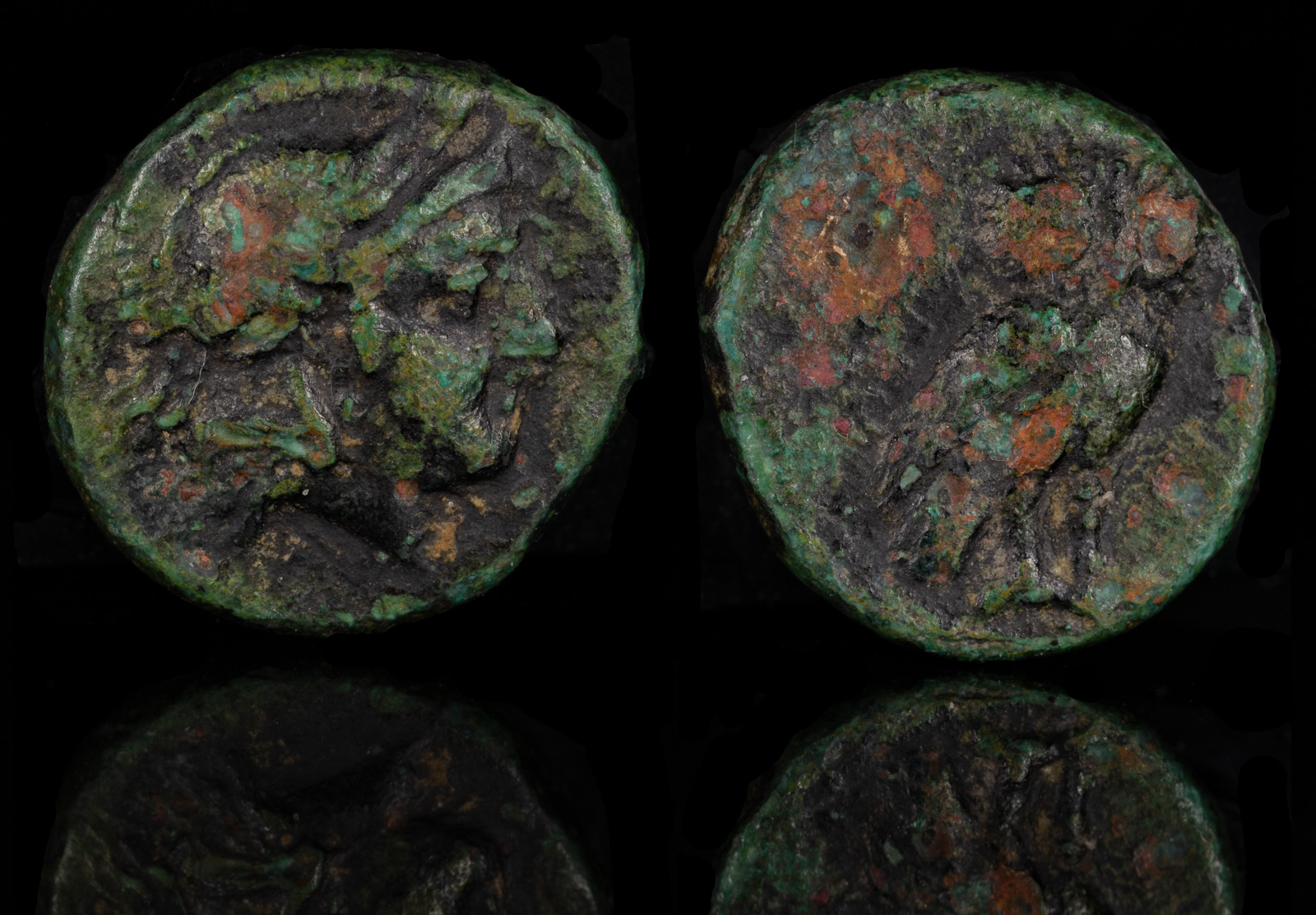
Troas, Sigeion Circa
Issued by Chares
350 BCE AE12 2.06g
Helmeted head of Athena right
Owl standing right, head facing
BMC 19-20
The name ‘Sigeion’ actually has some humor in it. While it’s derived from the meaning ‘silent place’, the truth was actually the opposite. The city was located on a promontory next to a part of the sea famous for its violent storms. Evidently the inhabitants had a laugh at that.
The city itself had a connection to Athens, hence one reason for Athena on the obverse and an owl on the reverse. While it was from legend originally settled by people from Mytilene, Athenians arrived shortly thereafter and challenged the Mytileans for supremacy. Several poems from Alkaios of Mytilene tell of this duel, although all but a few lines have been lost.

Troas, Sigeion
circa 355-334 BCE
Æ 13mm, 1,99g
Obv: Helmeted head of Athena facing slightly right
Rev: ΣΙΓΕ. Owl standing right, head facing; crescent to left
SNG Copenhagen 496-8; SNG Ashmolean 1214-6
The two sides appealed to Periander of Corinth to settle the matter, and Periander ruled on the side of Athens based on the assumption that Mytileans were Aeolians who had arrived to the area later. For quite some time afterwards, Athenians occupied Sigeion while Mytilene remained hostile next door. Eventually Mytilene captured the city, only for it to be retaken by Athens.
Sigeion remained on good terms with Athens through the Peloponnesian War and, shortly before the arrival of Alexander, the city was the retreat and for a period ruled by the Athenian general Chares.
After the death of Alexander, the city became a possession of Antigonos I Monophthalmos, and in 302 BCE it was taken by force by Lysimachos.
Approximate year when Athens sends the Olympic victor Phrynon to capture Sigeion. He duels Pittakos but is defeated when the latter uses a net.
Athens has control over Sigeion.
Mytilene recaptures Sigeion.
Hippias, the son of Pesistratos, is banished from Athens and spends time ruling Sigeion.
Chares spends several years relaxing at Sigeion, where he has taken control.
With the arrival of Alexander the Great, Chares pays respects to him from Sigeion.
Lysimachos takes Sigeion by force from Antigonos I Monophthalmos.